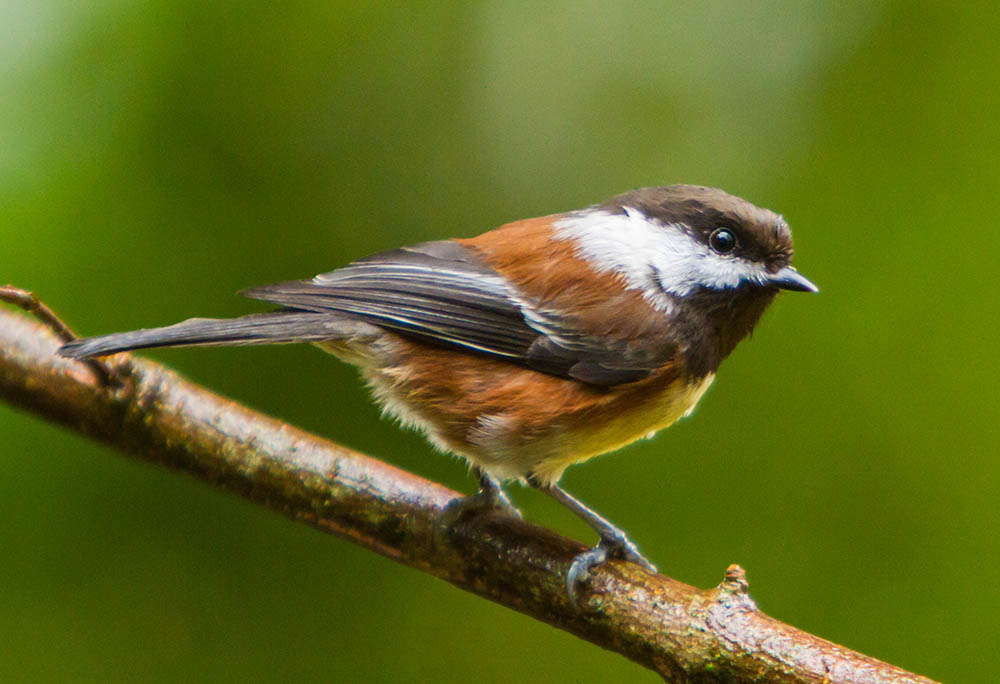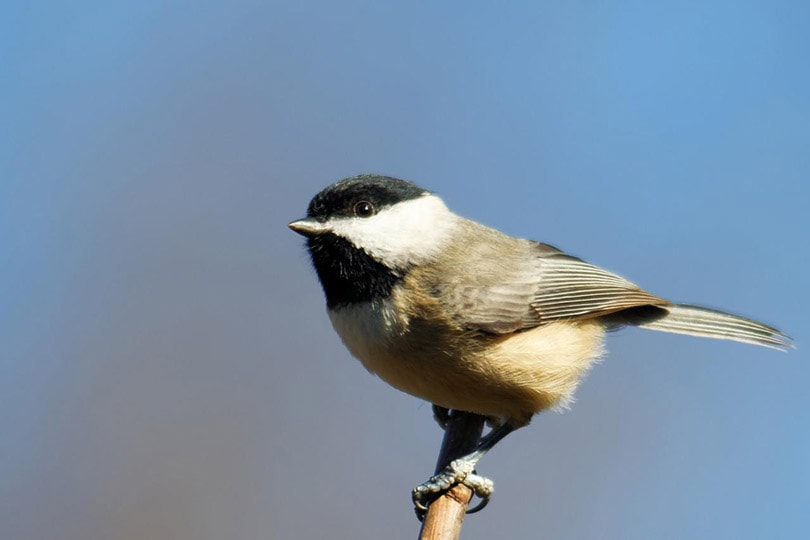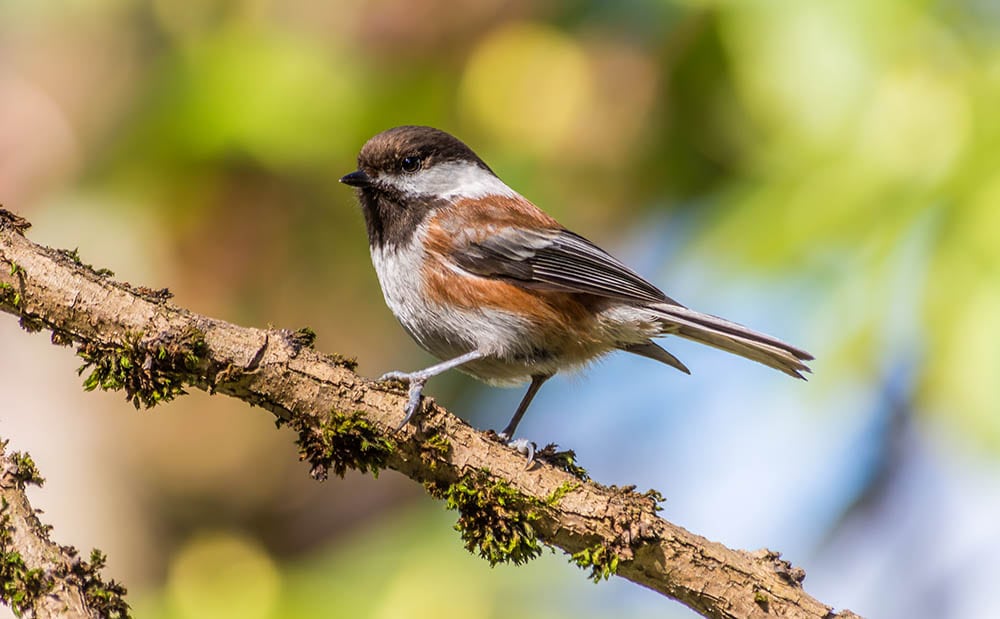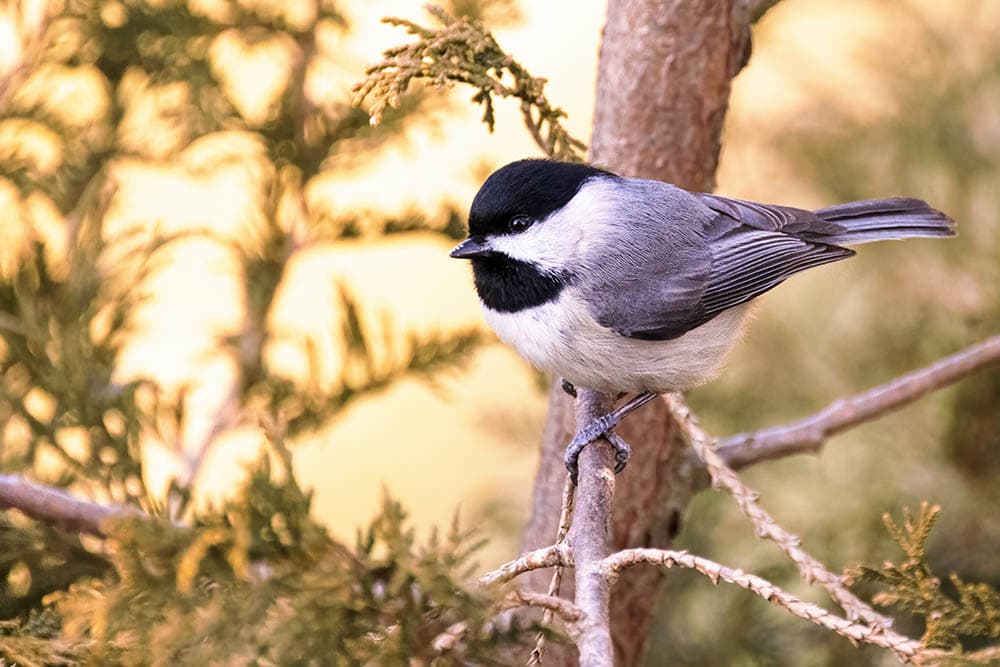5 Types of Chickadees (With Pictures)
Last Updated on

A chickadee is a plump, petite bird found across North America. They tend to be very chipper, active birds that like to nest in cavities. They’re non-migratory and often stay in one area, making friends with other species of small birds. The black-capped chickadee has the signature chickadee appearance with its dark head and diverse habitat that sprawls across the United States. There are five total chickadee species that live in the U.S., but most flocks are restricted to certain areas. Here’s how to tell which one frequents your feeder.

The 5 Types of Chickadees
1. Black-capped Chickadee

| Color: | Black-capped head, white, gray, and buff body |
| Wingspan: | 6.3-8.3 inches |
| Length: | 4.7-5.9 inches |
| Habitat: | Everywhere in North America north of Texas |
| Food: | Insects |
The Black-capped Chickadee has the signature Chickadee style copied in lesser populated species such as the Carolina Chickadee. It’s also similarly sized to the Mountain Chickadee and the Boreal Chickadee. The biggest difference between this bird and other species is that this variety can be found in more places than others. Its habitat ranges all the way from the east to west coast of the United States, as far south as New Mexico and onward up to Canada.
2. Chestnut-backed Chickadee

| Color: | White, brown, chestnut-colored body |
| Wingspan: | 7.5 inches |
| Length: | 3.9-4.7 inches |
| Habitat: | Pacific Coast |
| Food: | Insects |
If you live along the coast in California, Washington, Oregon, or Canada, you might find this small brown bird flitting from one tree to another. They like dense, coniferous forests, but some also live in cities near San Francisco. Unlike some chickadees whose size fluctuates, Chestnut-backed Chickadees always have 7.5-inch wingspans and tend to be a little smaller than their cousins.
3. Mountain Chickadee

| Color: | Gray, white, black, buff |
| Wingspan: | 6.3-8.3 inches |
| Length: | 4.7-5.9 inches |
| Habitat: | Evergreen forests in the North American West |
| Food: | Insects |
This chickadee species shares similar dimensions to the black-capped chickadee, but it has a distinguishing white stripe above its eye. Its feathers also tend to blend in a lighter pattern than other chickadees. The Mountain Chickadee spends its days chirping in coniferous forests in the land between west Texas and California, and north into Canada.
4. Boreal Chickadee

| Color: | Brown, white, gray |
| Wingspan: | 6.3-8.3 inches |
| Length: | 4.7-5.9 inches |
| Habitat: | Canadian spruce forests |
| Food: | Insects |
You’ll have to travel to Alaska or Canada to see this beautiful bird. The Boreal Chickadee likes to make its home in spruce trees deep in the Canadian woods. Its brown head and tawny flanks distinguish it from other chickadee species.
5. Carolina Chickadee

| Color: | White, gray, black, buff |
| Wingspan: | 5.9-7.9 inches |
| Length: | 3.9-4.7 inches |
| Habitat: | Southeastern United States |
| Food: | Insects |
The Carolina Chickadee looks very similar to the Black-capped Chickadee, and the two species can even hybridize. The biggest difference between the two is that the Carolina Chickadee mostly resides in the southern United States east of New Mexico and south of Michigan, while the Black-capped Chickadee can be found east to west across the U.S., but only north of Tennessee.

Conclusion
The chickadee is a common North American bird that can be found almost anywhere in the United States, but some specific species only live in certain regions. Next time you hear this songbird’s pretty “chick-a-dee” call, look outside your window and see if you can identify which one lives near you.
Featured Image Credit: Bob Pool, Shutterstock
About the Author Brooke Bundy
Brooke Bundy is a freelance writer who lives with three cats and a dog. She attended the University of North Georgia where she acquired a B.S. in Media Studies. Booke loves storytelling and spending time with her pets at their house in New Orleans, Louisiana. In her free time, she enjoys gardening, cooking, and brewing coffee.
Related Articles:
Monocular vs Telescope: Differences Explained (With Pictures)
10 Types of Hummingbirds in Arkansas (With Pictures)
8 Types of Hummingbirds in Nebraska (With Pictures)
5 Types of Hummingbirds in Idaho (With Pictures)
3 Types of Hummingbirds in Mississippi (With Pictures)
8 Types of Hummingbirds in Kansas (With Pictures)
5 Types of Hummingbirds in West Virginia (With Pictures)
5 Types of Hummingbirds in Ohio (With Pictures)
